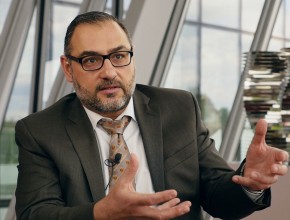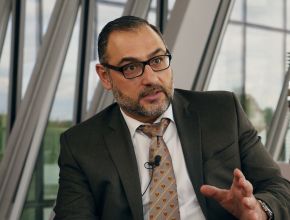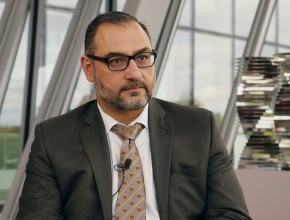In your opinion, what are the barriers for adoption of point-of-care ultrasound (PoCUS)?
Khalid Azzam: Definitely, as an innovation, the new thing that is being introduced, a different speciality, in medicine it is pretty new, I would say, and there are definitely barriers. One big barrier is what we have just touched on: training (see: Learning point-of-care ultrasound). We do not have yet any of those graduates who did it from when they were undergraduates, postgraduates, and now they are practicing it. Most of the people who practice PoCUS are people like myself, who have learned it through continuing medical education, continuing professional development, and then kept practicing more and more. The number is not huge. We can see from our conference today (MIRCIM 2016), the number of people raising hands who are practicing is maybe less than 10%. In general, there is 10%, 20%, maybe 30% of people who are doing it, so the number is much smaller. It has not picked up.
So that is one of the barriers: training and the number of people who are doing it. And the biggest barrier I would say that continues to be an issue is access to the machine itself. The machines have improved; the point-of-care instruments, handheld, hand-carried, bedside ones have improved tremendously, but they continue to be a bit costly for physicians to acquire themselves. The health system has not yet picked up on them and has not made sure they are available in every point of care; they are not always available on the floors of hospitals, in the wards, in the clinics, which are trying to acquire more machines, but that depends on the center. So access to the machine is another barrier.
The last barrier, which is not as significant, is that physicians who are acquiring this new skill need to understand that this is a skill that you are adding to your other skills to benefit your patients. Some look at the potential of compensation, in terms of billing and stuff like that, but that is not a huge barrier. I do not think it should be looked at at all. At the end of the day, people think, “That is going to take me more time to do the ultrasound. How is that going to help me in dealing with the patient?” I look at it in this way: it may take you a little bit time to do the ultrasound, but it will save you a lot of time in managing your patient. So if I see a patient where I am not sure if they are having pulmonary edema or chronic obstructive pulmonary disease (COPD), I make a decision that I am going to treat him as a COPD patient, and 2 or 3 days later I notice I made a mistake, I should have diuresed them more. If on the first day I had invested 5 or 10 minutes to look at the patient’s lung and I had seen a lot of those B lines that we have talked about, then I would have known it is not COPD – it is actually heart failure, and I can introduce my treatment early. That would save me my time, save my patient’s time, and save the system time and money, so it is a good investment.
 English
English
 Español
Español
 українська
українська




